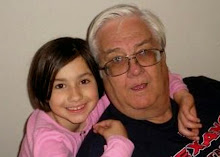Richard William (Dick) Dowling was born in Knockballyvisteal, Milltown, near Tuam (pronounced Too-am), Country Galway, Ireland in 1838, the second of eight children, born to Patrick and Bridget Qualter Dowling. He emigrated with his parents and six siblings to New Orleanss in the United States in 1846.In 1853, a yellow fever outbreak in New Orleans took the lives of his parents and four of his siblings. Orphaned, Dowling settled in Houston where he established a successful chain of saloons starting in 1857. Dowling was described as a likable red-headed Irishman and wore a large mustache.
By 1860, Dowling owned three saloons. His most successful saloon was named the Bank of Bacchus, located on Courthouse Square in downtown Houston. "The Bank" as it was known locally became Houston's most popular social gathering place in the 1860s and was renowned for its hospitality. Dowling had previous experience as a barkeeper in the Continental Coffeehouse in New Orleans and in Houston opened a saloon known as "The Shades". Quickly establishing himself, Dowling courted publicity from local newspapers and also made a number of property investments. He was also involved in setting up Houston's first gaslight company, and was first to have it installed in his home and "The Bank". Dowling was a founding member of Houston's Hook and Ladder Company Number One fire department and was also involved in running the city's first streetcar company.
At the outbreak of the Civil War Dowling enlisted in a Texas unit composed primarily of Irish dockworkers and known as the Jefferson Davis Guards. He participated in the Battle of Galveston and in 1863 now-Lieutenant Dowling along with a company of 44 men, almost all Irish, known as the Davis guards, was assigned to an earthen artillery post on the Sabine River named Fort Griffin. Known for his skilled artillery work, Dowling spent his time at the remote outpost instructing his men in artillery targeting drills across the Sabine River's two channels, which the fort guarded. He implemented an innovative idea, placing colored poles in the river marking the distance and elevation for his artillery crews.
On September 8, 1863 a Union navy flotilla of 5,000 men attempted to enter the channel. Dowling's artillery drills paid off as the Confederates scored several direct hits on the flotilla, forcing its retreat and leading to the capture of 350 prisoners and a large quantity of supplies, thwarting a Union invasion of Texas.



No comments:
Post a Comment